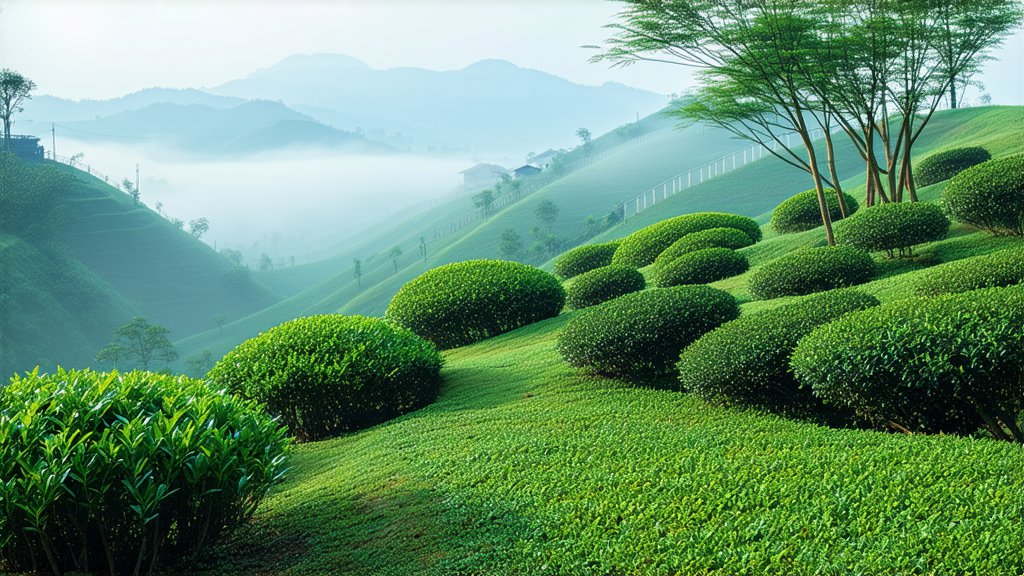
China, the cradle of tea culture, boasts an array of exquisite teas that have captivated palates for centuries. Among these, Longjing Tea, also known as Dragon Well Tea, stands out as a quintessential representation of Chinese green tea elegance. This article embarks on a journey through the history, varieties, intricate craftsmanship, and art of appreciating Longjing Tea, inviting international readers to savor its essence from afar.
A Legacy Brewed in Legend
Longjing Tea traces its origins back to the Tang Dynasty (618-907 AD), though it gained prominence during the Qing Dynasty when Emperor Kangxi was said to have encountered this exceptional tea. Its name, "Dragon Well," is derived from a well near the West Lake in Hangzhou, Zhejiang Province, where the tea is primarily cultivated. The region's unique microclimate, characterized by mild temperatures and abundant rainfall, fosters ideal conditions for growing high-quality tea leaves.
Varietals of Verdant Virtue
While Longjing Tea is often referred to as a single entity, it encompasses several grades based on采摘标准 (picking standards) and processing techniques. The most revered is Xichun (Pre-Spring) Longjing, harvested before Qingming Festival, which yields tender, aromatic leaves with minimal bitterness. Following are Meichun (After Spring) and Shunxi (Late Spring/Early Summer), each reflecting the seasonal nuances in flavor and aroma.
The Dance of Leaves: Crafting Longjing
The artistry of Longjing Tea lies not only in its cultivation but also in its meticulous production process. It begins with the careful selection of young tea shoots, typically one bud and two leaves, ensuring optimal freshness and flavor concentration. These are then pan-fried in a wok or specialized flat pan over high heat, a technique crucial for preserving the tea's vibrant green color and distinctive chestnut aroma.
Skilled artisans employ a series of rapid hand movements to evenly distribute heat and prevent burning, simultaneously shaping the leaves into their characteristic flat and slender form. After the initial fixation, the leaves undergo a secondary roasting to further refine their taste profile, followed by cooling and sorting to remove any imperfections.
Savoring the Symphony of Flavors
To truly appreciate Longjing Tea, one must engage in the ritualistic practice of Gongfu Cha (功夫茶), which emphasizes mindfulness and precision. Begin by warming the teapot and cups with hot water to enhance the brewing experience. Add approximately 3 grams of loose leaf tea per 150 milliliters of water, adjusting according to personal preference.
Pour water heated to around 80°C (176°F) gently over the leaves, allowing them to unfurl gracefully. The first infusion, lasting about 20-30 seconds, serves to 'wake up' the tea, while subsequent infusions can be extended gradually, revealing layers of complexity. Observe the bright yellow-green liquor, inhale its delicate fragrance, and take small sips to fully appreciate the sweet, umami notes balanced by a subtle vegetal undertone.
Conclusion: A Timeless Treasure
Longjing Tea embodies the harmony between nature and human ingenuity, offering a sensory voyage through China's rich tea heritage. As you embark on your exploration of this verdant elixir, it is more than just a beverage; it becomes a bridge connecting cultures, inviting all who partake to experience the tranquility and refinement inherent in every cup. So, brew yourself a pot of Longjing, let its gentle warmth envelop you, and embark on your own journey through the emerald depths of Chinese tea lore.